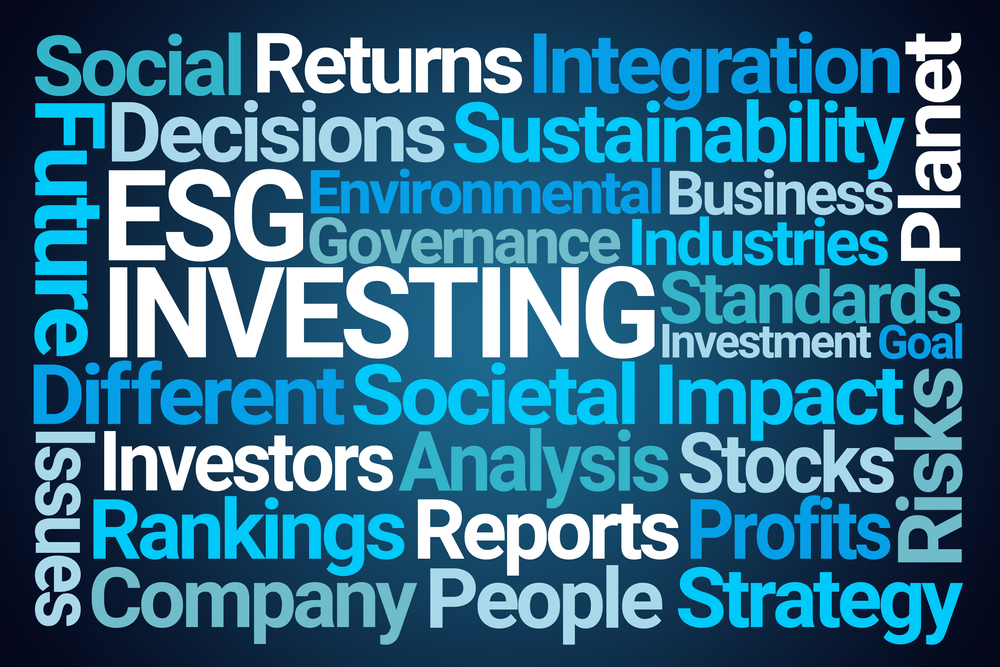By Ryan Flaim, Senior Vice President
Our Blog: The Podium
By Polly Pearson , Senior Vice President
Strategic Messaging, Corporate Governance, Reputation Management, start-up IR, private company IR
By David Calusdian, President
An effective program for Environmental, Social and Governance (ESG) management and communication can fundamentally make an organization stronger, more resilient and more attractive to investors and other key stakeholders, while helping to mitigate long-term risks.
In today’s blog we talk to Evan Zall about how to incorporate public relations into an ESG program. Zall is President of Longview Strategies, a strategic marketing and communications firm with an emphasis on sustainability and finance. With more than 20 years in strategic marketing, Evan believes that strong communications can resolve a great number of complex challenges in the world – and clarifying connections between sustainability and profit is one of those challenges. Evan has been a speaker at national and regional sustainable investing forums, is a founding member of PR Masterminds, and is a contributor to the upcoming book, “Aligning Hearts, Minds, Wallets: A Collective Experience (Reshaping Capitalism for the Greater Global Good).”
Strategic Messaging, Corporate Governance, Public Relations, ESG
By Maureen Wolff, Chief Executive Officer
With a record $20 billion+ flowing into ESG oriented funds in 2019 in the US alone there is no denying that a compelling Environmental, Social and Governance (ESG) platform has become a critical component of investor relations programs and overall communications for corporations of all sizes. Investors, proxy advisory firms and debt rating agencies are demanding it. And, other stakeholders including employees, customers, strategic M&A suitors and suppliers are increasingly considering ESG practices in deciding where to work and with whom to conduct business.
ESG can fundamentally make an organization stronger, more resilient and more attractive to key stakeholders, while helping to mitigate long-term risks. At the same time, the lack of an ESG strategy and sustainability narrative can leave a company exposed and at risk on several fronts.
ESG data is being used on every public company today, whether the companies have released ESG information or not. As BlackRock CEO Larry Fink stated in his 2019 Letter to CEOs, “In the absence of robust disclosures, investors, including BlackRock, will increasingly conclude that companies are not adequately managing risk.” Additionally, BlackRock along with State Street and other institutions have committed to vote against directors at companies that do not demonstrate a commitment to ESG.
The events of recent months -- including the global COVID-19 pandemic and the racial justice movement -- have further amplified the need for greater corporate focus on a range of ESG initiatives, including risk oversight, supply chain security, IT infrastructure, employee safety, talent management and diversity and inclusion.
While doing nothing on the ESG front is clearly no longer a viable option, implementing an ESG program can seem overwhelming -- particularly if publishing a full-scale sustainability report that meets GRI or other standards would not be feasible for your company right now.
The good news is that ESG is a journey, not a sprint. By taking a few strategic first steps to put a stake in the ground, you can establish a strong ESG foundation to build upon over time and earn tremendous credit from investors, employees, customers and the society at large.
We’ve guided many companies through this “walk before you run” approach. Here is where we suggest you start:
Strategic Messaging, Corporate Governance, Investor Meetings, Presentation Training, Crisis Communications, IRO, Financial Communication, Shareholder Communications, Investor Relations, Investor Relations Firm, IR Trends, Investor Relations Trends, Corporate Communications, Investor Relations Websites, IR Recommendations, ESG
After many months of data breach disclosures and sexual harassment scandals, of frustration about perceived pay inequality and insular boardrooms, the largest financial institutions in the world have finally had enough. Larry Fink, CEO of BlackRock, fired the first warning shot this year, when in January he issued his annual letter to CEOs, titled “A Sense of Purpose.” In the letter, Fink asked public companies not only to deliver increasing returns but to demonstrate how they make a “positive contribution to society.” And in March, the Council of Institutional Investors (CII), which represents 130 pension funds managing more than $3.5 trillion in assets, called for corporate boards to adopt stricter guidelines for executives violating sexual harassment codes.
Strategic Messaging, Corporate Governance, Board of Directors, Reputation Management, Investor Relations, Corporate Communications, crisis communication plan, crisis preparation, Culture risk
Global cybercrime damages are expected to exceed $6 trillion annually by 2021. From hacks of mobile payment and other non-traditional payment systems to data manipulation and sabotage, the external threats to operations and customer and investor perception seem to increase daily. We recently sat down with cybersecurity expert William S. Rogers Jr. of Prince Lobel Tye LLP, a Boston law firm whose attorneys handle matters of local, regional, national and international reach. Rogers, who is chair of the firm’s Data Privacy and Security Practice Group, discussed cybersecurity regulation and its impact on public and private companies.
Strategic Messaging, Corporate Governance, Board of Directors, Reputation Management, Investor Relations, Cybersecurity, Investor Relations Trends, Corporate Communications, IR Compliance, crisis communication plan, cybersecurity communication plan, crisis preparation
What makes Sharon Merrill Associates excel in the world of strategic communications? Trust. Experience. Resilience. Passion. Vision. Perspective. Partnerships. Take a look at our story and see how we leverage these qualities to help you build value.
Corporate Governance, Investor Day, Crisis Communications, Analyst Day, Investor Relations, Corporate Communications, Transition Communication, Event Planning, Perception Study, crisis preparation, Employee Communications
Note: This is the finale in our three-part series on succession communications.
As you’ve no doubt noticed from our previous posts on communicating CEO and CFO transitions, there’s no such thing as a “standard” executive announcement. And messaging board-level succession carries additional nuances you’ll need to consider as you frame a board change in the best position for long-term success with the investment community.
To assist in that effort, here are five points to guide you in announcing a change on your board.
1. Change is good. Change carries inherent uncertainty, and investors typically frown on that. However, institutional shareholders, and shareholder activists in particular, have emphasized board refreshment in recent years as a means of improving corporategovernance. Proxy advisers Glass Lewis and ISS also view it favorably. The theory here is that more frequent board turnover opens a company to new thinking and the best possible strategic benefits in the long run. Put another way, your board either can be stagnant or growing. Approach your announcement from a confident perspective, because chances are your shareholders will welcome the addition of new viewpoints.
Investor Relations Blog, Succession Planning, Corporate Governance, Crisis Communications, Investor Relations, Corporate Communications, Succession Communication
By Dennis Walsh, Senior Consultant & Director of Social Media
Last week, I attended the NIRI Annual Conference. It was very educational and an incredible opportunity to meet and exchange ideas with many of the approximately 1,300 investor relations professionals from more than 20 countries that attended the event in Seattle.
NIRI organized more than 45 informative panel sessions and workshops that were led by some of IR’s top influencers. While I wanted to attend each one, unfortunately I am not omnipresent. For those that I did attend, I left with several key takeaways that can benefit any IR program and wanted to share those with you here at The Podium.
Investor Presentation, IR Program Planning, Board Packages, Shareholder Surveillance, Disclosure, Targeting, Board Communications, Annual Meeting, Corporate Governance, Shareholder Activism, SEC, Proxy Season, Board of Directors, Proxy Access, NIRI, Disclosure Policy, IRO, CFO, Social Media, Investor Relations, Activist Investors























